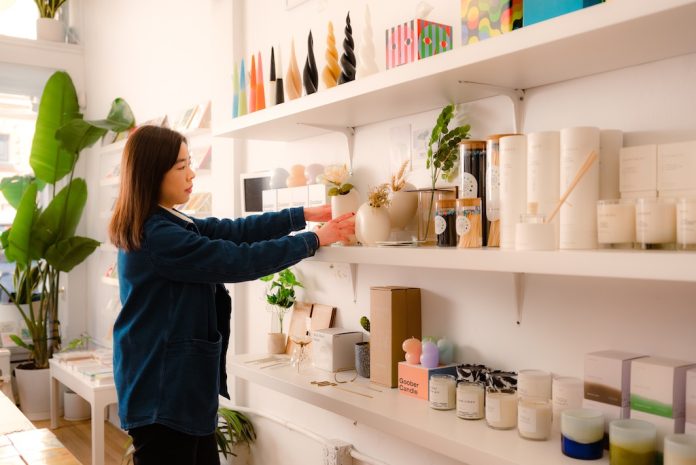
In any brick-and-mortar store, there must be retail displays. In addition to informing customers about particular brands and products, displays guide shoppers’ paths and provide aesthetic appeal to the store as a whole. Dull and monotonous retail settings are hardly one’s idea of a good time.
The importance of retail displays is comparable to the “presentation” of high-end cuisine. In addition to having great flavour, visually attractive cuisine is sure to please the palate as well as the other senses.
A retail display can transform a boring task into an exciting multimodal shopping experience when it is effectively designed and provides colour and energy to retail settings.
Benefits of Strategically Placed Retail Displays
Whether it’s an eye-catching typeface, a dynamic colour palette, a video loop for demonstration or an interesting picture series, well-designed displays often have some kind of uniting aspect. On top of that, they should work. This is of the utmost importance, even though it may seem silly.
Retail displays should be user-friendly and straightforward to save the consumer time and effort. Video clips, tutorials or infographics that demonstrate the products’ use should also be included in displays. The consumer won’t get the most out of a display if no visual clues are present.
A display that can present many demo units showcases the total capabilities of a single system, which is great for multidimensional technology brands that want to sell comprehensive suites of solutions. For example, a smart home security system.
More and more interactive displays are being seen as” silent salespersons”. Thus, it’s important that they can do their job well even when store employees aren’t around. They must, therefore, be long-lasting and designed to endure.
What is the Best Way to Craft a Retail Display?
Building a retail display requires careful planning and top-notch components. Particularly interactive displays that encourage customers to physically interact with a brand’s products endure a lot of wear and tear. For example, a display made of low-quality cardboard would probably start to fall apart after just a few weeks of use, if not days.
How simple it is to clean your retail displays is another factor to think about. Consumers are more concerned than ever before with the hygiene of public areas, particularly in places like supermarkets.
Because of hygiene concerns, over 25% of shoppers say they go to a rival instead of their local grocery store, and 18% say they only use their local store for fast food in and out. You may have to wait longer between maintenance visits for displays that need specific cleaning products or methods; as a result, they may grow dusty and untidy.
Technology is a fundamental component of interactive displays. And it’s common knowledge that technology has its flaws. Make sure all the parts of your interactive display are easily accessible in case you ever need to maintain it or troubleshoot it. This is good practice while planning and building the display.
Make your interactive displays remotely accessible if at all feasible. This will allow associates to remotely change messages and do “health checks”, regardless of the current campaign your brands are running. The capacity to adapt quickly to changes in technology and innovation is what will eventually set average retail displays apart from exceptional ones.
Finally, a display should have a user-friendly interface. It has to grab shoppers’ attention with a recognisable logo and then highlight pertinent messages regarding the category of products it is marketing. In a similar vein, you should constantly check that the display won’t damage any parts of your product.
If you’re selling high-end headphones, for instance, make sure the display’s power cable is long enough so that a consumer can easily test them on and feel the exceptional noise cancellation technology. The display’s design should also encourage natural interaction.
Direct the customer to the correct button to start demonstrations, learn how to activate a camera, access a playlist and more. Form and function are of equal importance when designing retail displays.
The excitement doesn’t stop when you create the ideal display. What follows is a consideration of the requirements for maintaining the display’s functionality at its Day 1 level. Because of the complexity of the situation, it is imperative that no detail be disregarded.
To Summarise
Many brands, retailers and display makers choose to work with third-party retail organisations to provide that degree of always-on service. These companies can monitor the store floor, do necessary maintenance checks and update their systems as required.
They can promptly investigate technology problems and report back to their customers the same day with picture links and bespoke dashboards. They also monitor part inventories and expedite shipment, so their partners never have to worry about display components that don’t work.
Although the retail environment of today may seem a bit unpredictable, with the help of experts, you can always be assured that your brand’s displays look their best and function flawlessly under duress.












